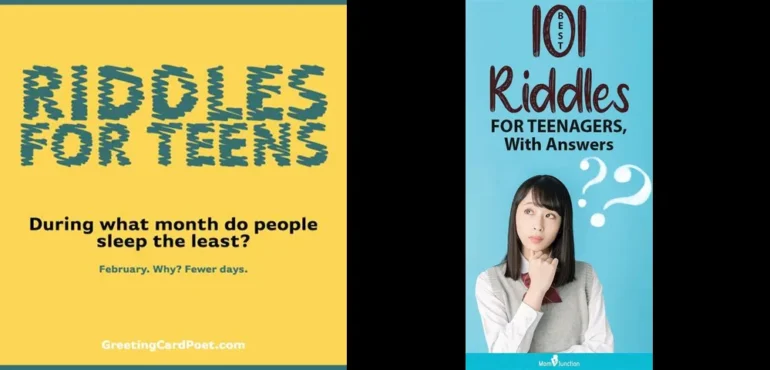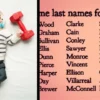Are you ready to put your brain to the test? Get ready to crack the code with our collection of mind-boggling riddles for teens! Whether you’re looking to challenge yourself or impress your friends with your wit, these riddles will keep you entertained for hours. From navigating a perplexing staircase to unraveling a nautical enigma, we have a variety of brain teasers that will leave you scratching your head. So, put on your thinking cap and get ready to dive into the world of riddles for teens. But be warned, once you start, you won’t be able to stop!
Staircase Conundrum
Embark on a mental expedition with a riddle that seems to defy the laws of physics. Riddle: What goes up and down stairs without moving? At a glance, one’s mind may conjure images of animate beings or objects trekking the stairwell. Yet, in this clever twist of language, the answer is none other than a rug. A staple in many homes, the rug rests on the steps, steadfast in its position, while giving the illusion of aiding our ascent and descent. This riddle encourages us to shift our perspective and approach problems from angles we might not typically consider. For additional riddles that tickle the intellect, you’re invited to explore further insights with a click here.
Nautical Enigma
Voyage into the depths of wordplay with a nautical-themed brain teaser. Riddle: What comes up to let us go or goes down to make us stay? This query may plunge your thoughts into a sea of confusion; however, the answer is a simple yet vital piece of maritime equipment – an anchor. This riddle exemplifies how common objects can be veiled in complex language, often using metaphors or analogies that require us to navigate through our knowledge of the world. For more riddles that sail beyond the horizon of ordinary thinking, set your course for Reader’s Digest.
| Riddle Category | Example | Answer |
|---|---|---|
| What am I? | What goes up and down stairs without moving? | Rug |
| Nautical | What comes up to let us go or goes down to make us stay? | An anchor |
| Transformation | I’m tall when I’m young, and I’m short when I’m old. What am I? | A candle |
| Upside Down Growth | I grow down as I grow up. What am I? | A goose (goose feathers) |
Unlocking the mystery behind a riddle is akin to discovering a hidden treasure. To unravel the enigma, one must peer beyond the veil of obvious meanings and delve into the realm of synonyms and double entendres. As you wade through the riddle’s words, let each term’s multitude of definitions wash over you, and attempt to piece together the puzzle from each nuanced angle. Remember, many riddles are crafted with words whose kinship to the answer is more about the relationship between concepts than direct synonyms. This approach to problem-solving not only enhances your riddle-cracking skills but also sharpens your wit for the complexities of language and life.
As we continue to weave through the tapestry of riddles, let the thrill of the challenge be your guide. With each solved mystery, your journey through the intricate world of word puzzles becomes ever more rewarding. Keep in mind these strategies as you anticipate the next section, where the riddles grow in complexity, inviting you to explore from head to toe, and even witness growth in an upside-down world.
Time and Transformation
Delving into the realm of change and the passage of time, consider this riddle that merges the fleeting nature of existence with the physical world: I’m tall when I’m young, and I’m short when I’m old. What am I? The solution to this enigma, a candle, is as poetic as it is literal. With each moment that passes, the candle diminishes, its stature waning as it provides light and warmth, a beautiful metaphor for life’s impermanence.
Head and Tail Riddle
This next riddle invites you to explore the curious case of a head and a tail that are destined never to meet. Ponder this: I have a head and a tail that will never meet. Having too many of me is always a treat. This riddle might require a shift in perspective, as it’s not referring to a living creature but rather something more material. It’s not just a physical description; it’s a clue to the riddle’s solution. Can you unravel the mystery?
From Head to Toe
Now, let’s tackle a riddle that speaks to the very tools we use to facilitate our daily routines: I help you from your head to your toe. The more I work, the smaller I grow. This conundrum asks us to consider objects that are actively involved in our life’s maintenance yet are consumed in the process. Could you deduce what this indispensable, yet ever-diminishing, item might be?
Upside Down Growth
Concluding our current exploration is a riddle that seems to defy logic at its core: What grows up as it grows down? The initial confusion this riddle instills is intended, coaxing you to think outside the conventional box. The answer, a goose, is a delightful twist, connecting the avian growth to the increased production of its insulating feathers, known as down. It’s a clever play on words that binds the natural world to our linguistic expressions.
As we navigate through these riddles, we are not only entertained but also invited to expand our thinking and embrace the subtleties of language. They serve as a reminder that answers often lie in the nuances and that a shift in perspective can unveil solutions that once seemed elusive.
Tips for Solving Riddles
Embarking on the journey of solving riddles can be akin to embarking on a treasure hunt, where the treasure is the satisfaction of cracking a particularly challenging puzzle. To assist you in mastering the art of riddle-solving, consider these strategic tips:
- Double Entendres: Riddles are notorious for their use of words that carry more than one meaning. Be vigilant for double entendres that may seem straightforward at first glance but hide a secondary, less obvious interpretation.
- Explore Synonyms: The English language is rich with synonyms that can turn the tide in your favor when deciphering riddles. If one meaning doesn’t fit, try on another for size. The answer might just be hiding behind a synonym you hadn’t considered.
- Associated Concepts: Sometimes the solution to a riddle isn’t found within the words themselves but through associated ideas or themes. Expand your thinking to concepts that orbit the literal words for a chance to uncover the answer.
Riddles are designed to stretch your mind and force you to think in unconventional ways. They’re not just puzzles; they’re brain teasers that challenge your perception of language and its possibilities. By adopting a flexible mindset and considering all possible interpretations of the riddle’s phrasing, you’ll be well on your way to becoming a seasoned riddle solver.
Riddle-solving is not only a test of intelligence but also a celebration of the whimsical and playful aspects of language. Keep an open mind, enjoy the process, and remember that the essence of riddling is to find joy in the unexpected twists and turns of words. With these tips in your arsenal, you’re ready to tackle even the most cryptic enigmas. So go forth, and let the riddling begin!
Q: What are some riddles suitable for teens?
A: Here are a few riddles that are perfect for teens: “What goes up and down stairs without moving?” (Answer: rug) and “What comes up to let us go or goes down to make us stay?” (Answer: An anchor).
Q: How can I solve a riddle?
A: To solve a riddle, focus on words with double meanings or synonyms. Look for words that have multiple definitions and try solving it for each meaning. Additionally, many riddles use words that have similar meanings to the answer, so try thinking of related words or phrases.
Q: Can you give an example of a riddle with a double meaning?
A: Certainly! Here’s an example: “What grows up as it grows down?” (Answer: A goose). In this riddle, the word “down” has a double meaning – it refers to both the feathers of a goose (called down) and the opposite direction of up.
Q: What is a riddle that involves something changing in height?
A: One example of a riddle involving something changing in height is: “I’m tall when I’m young, and I’m short when I’m old. What am I?” (Answer: A candle). In this riddle, the height of the candle decreases as it burns down.



